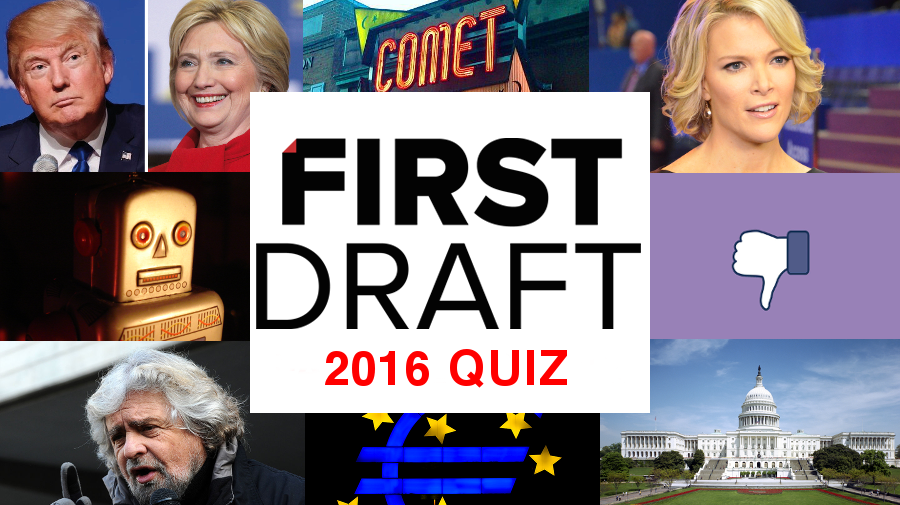From the beginning of this year First Draft published a monthly fake news quiz, highlighting fabricated stories and misinformation from around the world. It included unverified reports published by major news organisations, rumours circulating during breaking news events, serious political propaganda, re-purposed or manipulated images and full-blown hoaxes written and distributed by opportunists looking to make a quick buck.
The quiz was intended as a fun and humourous look at misinformation, a media literacy experiment to raise awareness about the types and sources of information circulating on social media.
Then Donald Trump won the US election and the media went into meltdown. Fake news wasn’t funny anymore. For many people affected by false stories and rumours circulating online, it never was. And, like Lewis Carroll’s Humpty Dumpty in Alice in Wonderland, people everywhere started using the phrase “fake news” subjectively, without any consensus on its definition.
“When I use a word,” Humpty Dumpty said, in rather a scornful tone, “it means just what I choose it to mean — neither more nor less.”
Looking to score points against a major news organisation? They’re pushing fake news. Someone published an opinion piece selective with the facts? That’s fake news. A reporter made a genuine error which they later corrected? Fake news. Found a website publishing completely fabricated articles to service a specific agenda? That really *is* fake news.
A quick look at the hashtag #fakenews shows how the term has been weaponised. The same partisan divisions and filter bubbles exploited by genuine purveyors of misinformation are hardening into fortresses of opinion, bolstered by the belief that the public are being defrauded at every turn.
And clickbait sites continue to steal the moral high ground of speaking truth to power from established news organisations, with the same business models but lower editorial standards.
Fake news, in the sense of intentionally deceptive and factually vacuous stories, look and feel exactly the same as the truth. Trust in journalism has plummeted. As Josh Stearns pointed out recently, there is a need for journalists and news organisations everywhere to develop a “trust toolkit” and retake some of the ground lost to populist hoaxers. The challenge is complex, but without rebuilding that trust journalism can’t rise above the flood of misinformation.
So, to see out 2016, we’re doing a different kind of quiz, focussing on the scope and impact of the misinformation ecosystem across the year. We’ll be working on addressing the challenges and finding possible solutions with our partners around the world, and will have more information on the details in the new year.
See how much you remember from the year in which lies and conspiracies stepped through the looking glass in the quiz below.
Try the other fake news quizzes from over the year:
- January’s fake news quiz: Celebrity deaths, Tony the Tiger and Trump-branded condoms
- February’s fake news quiz: Singing gorillas, Presidential pranks and a bit of bondage
- March’s fake news quiz: Terror attacks, giant rats and real-life unicorns
- April’s fake news quiz: Prince, Bernie and an inter-dimensional weasel
- May’s fake news quiz: Egypt Air, Brexit and a Congressional confession
- The First Draft fake news quiz: Brexit edition
- June’s fake news quiz: Football fans, kissing politicians and Arnie on safari
- July’s fake news quiz: Pokémon, Paris and the Ku Klux Klan
- August’s fake news quiz: Bagpipes, Metallica and sex education
- September’s fake news quiz: Harambe, trolls and 9/11
- October’s fake news quiz: Clowns, elections and the art of war



